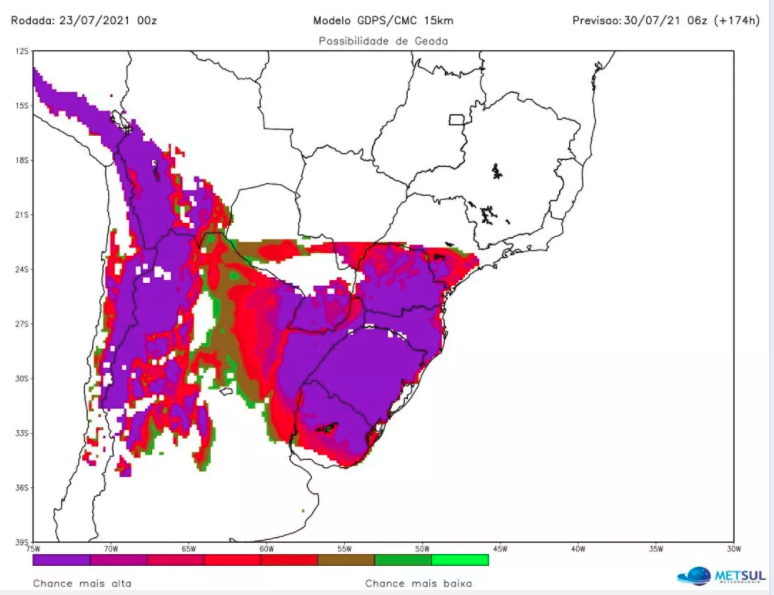Frost in Brazil affecting coffee, sugar cane and corn yields

On July 19th, the worst polar cold throughout this winter swept off Brazil, up to Central Brazil in Goias state. On top of this, the lowest temperature registered was -5.2 degrees Celsius in the South of Parana, bringing frosts to the South region, São Paulo, Mato Grosso do Sul, and Minas Gerais states. Due to the unfavorable weather conditions that hit hard the main agriculture producing regions in Brazil, the production volume of major crops: Coffee, Citrus, and Sugar cane yield is expected to decrease at the end of the season.
São Paulo state is the main sugarcane producing area in Brazil and is responsible for 60% of the sugar produced in the country, and it is available all year round. However, since the frost causes freezing and cell rupture in the canes, affecting its growth rate and sugar level drop. This forces the producers to mill their sugarcane earlier than planned, reducing its yield. Moreover, in the case of recently planted sugarcanes, replanting might be necessary. According to the recent prediction of the USDA, the sugar production was already short 5% in 2022 due to the ongoing droughts during the first semester and this reduction will further be accentuated by the recent frost.
For Minas Gerais state, the damage was on the arabica coffee crop. The state is the biggest producer of arabica coffee representing 75% of the national production. In 2021, the arabica coffee crop has an already reduced volume due to its off-year combined with the droughts by La Nina. And the frost burned many coffee plants in the state, reducing the expected production volume even further for this year. Consequently, coffee's future price spiked up, and the future price of coffee arabica for September has increased by 20% this week in comparison with last Friday before the frost.

Source: The ICE
The winter crop-producing regions in the western area were affected by this frost as well. The corn is at the harvesting stage, and burn from the frost will affect the yield. Since the winter crop has already experienced a production decline of 18% due to the adverse climate conditions from the last months, yield is highly likely to be reduced again after the frost.
Another polar cold front is expected to hit Brazil in the coming days
To worsen the situation, another polar cold front is expected to hit Brazil during this week. This cold front is expected to be one of the worst of the century. During the weekend the forecasts will be more precise, but the cold front shall hit Brazil on the 27th or 28th of July, and unlike other cold fronts, this front is expected to continue for around a week. There are also some data that show a possible increase in power of the cold front on Friday, pushing Brazilian crops’ yield even further.

Source: Metsul
Sources:
- Bloomberg. “Wild weather in biggest coffee exporter sparks price surge”
- Canal Rural. Translated from Portuguese. “Coffee prices in NY surge with news of frosts in Brazil”
- Gamaya. “Frost damage in sugarcane”
- Moneytimes. Translated from Portuguese. “Frosts burn corn, wheat and sugar cane”
- Metsul. Translated from Portuguese. “Cold front could be the strongest in a century”
- Reuters. "Frosts hit Brazil’s cane, coffee, orange crops says, weather expert”
- The Ice. Market data.